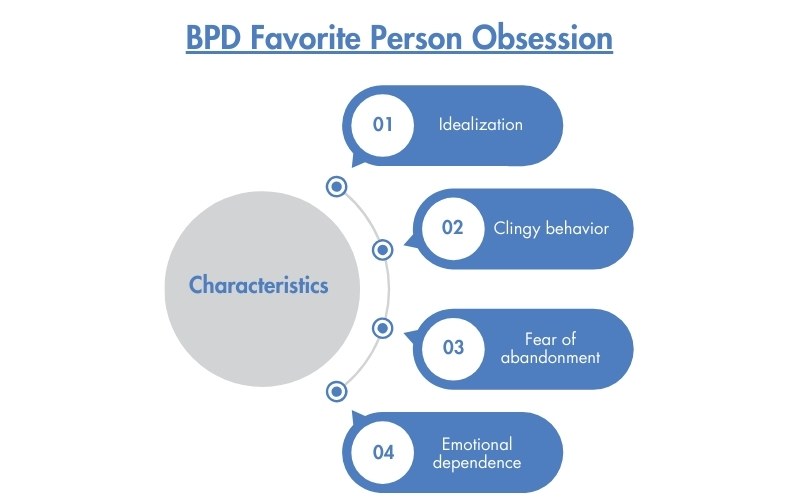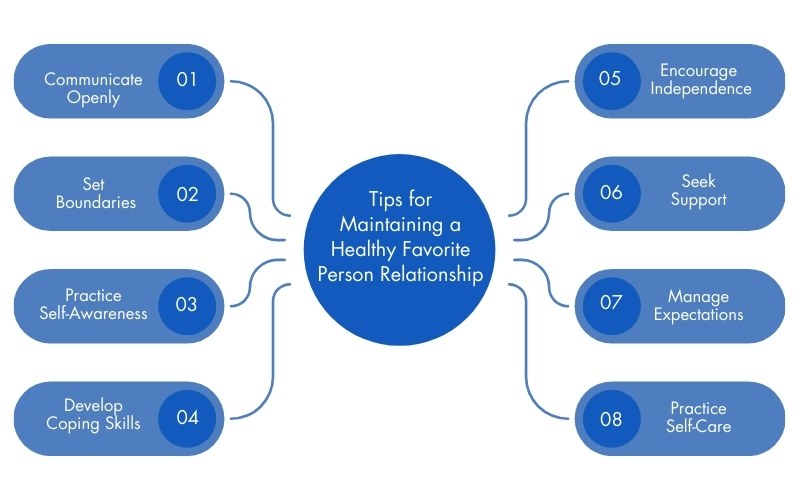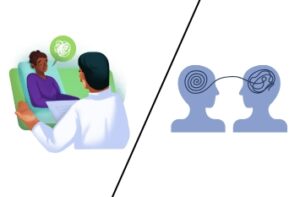
Why Do I Feel High When I’m Not?
Why Do I Feel High When I’m Not? Get Instant Relief Now! Have you ever experienced that odd sensation of feeling “high” or strangely euphoric,

Borderline Personality Disorder (BPD) is a complex mental health condition characterized by unstable relationships, self-image, and emotions. One particular aspect of BPD that often garners attention is the concept of the “Favorite Person” (FP). For individuals with BPD, the FP is someone they idealize and depend on for validation, support, and a sense of identity. This dynamic can deeply influence their emotional well-being and interpersonal interactions, often leading to intense fluctuations in mood and behavior.
Understanding the concept of the Favorite Person is crucial in comprehending the lived experience of individuals with BPD and the challenges they face in managing their mental health condition.
The term “Favorite Person” (FP) holds significant weight in Borderline Personality Disorder (BPD). In essence, the FP represents a singular individual whom someone with BPD deeply idealizes and emotionally relies upon. This individual is often seen as a source of validation, stability, and comfort, playing a central role in the individual’s life and emotional landscape.
The concept of the FP is complex, as it involves intense emotional attachments and dependency, which can have profound effects on the individual’s interpersonal relationships and overall well-being.
Understanding the meaning behind the FP is crucial in comprehending the intricate dynamics of BPD and how it manifests in the context of personal connections.
Borderline Personality Disorder Favorite Person (FP) refers to a specific individual whom someone with BPD highly idealizes and becomes emotionally dependent upon.
This person often serves as a primary source of validation, emotional support, and stability for the individual with BPD. The FP dynamic is characterized by intense emotions, fluctuating between extreme admiration and fear of abandonment.
Individuals with BPD may engage in behaviors aimed at maintaining their connection with the FP, such as seeking constant reassurance or becoming overly preoccupied with the FP’s thoughts and actions.
This concept is central to understanding the interpersonal dynamics and emotional experiences of those living with BPD.
Favorite Person Syndrome” isn’t an official clinical term, but it refers to a dynamic often seen in individuals with Borderline Personality Disorder (BPD). In this context, it describes a strong attachment to a specific person, called the “favorite person” (FP).
The FP becomes central to the individual’s life: They rely heavily on the FP for emotional support, validation, and a sense of security. They may idealize the FP, attributing them with almost perfect qualities.
Intense emotions and fear of abandonment: The individual’s mood and self-worth can be heavily influenced by the FP’s actions or perceived availability. They may experience intense fear of abandonment and engage in behaviors to prevent it, like clinginess or possessiveness.
Potential for unhealthy dynamics: This intense attachment can create an imbalanced and potentially unhealthy dynamic in the relationship. The FP may feel overwhelmed by the constant reliance and emotional intensity.
The intense attachment some individuals with BPD experience towards a specific person is more accurately described as “favorite person obsession” rather than “Favorite Person Syndrome” as it emphasizes the potentially unhealthy and obsessive elements of this dynamic.
Characteristics:

Consequences:

Recognizing if you have a Favorite Person (FP) often involves introspection and observation of your emotional responses and behaviors within relationships. You may notice a significant emotional attachment to a particular individual, feeling a deep sense of reliance on them for validation and support.
The fear of abandonment may be prevalent, leading to efforts to maintain closeness and avoid perceived rejection. Preoccupation with thoughts of the individual and difficulty setting boundaries can also indicate the presence of an FP dynamic. Additionally, you might experience intense emotional reactions to situations involving the FP, further highlighting their significance in your life.
Being mindful of these patterns can provide insight into the nature of your relationships and the role of the FP within them.
Maintaining a healthy relationship with your Favorite Person (FP) is essential for your emotional well-being and the stability of your interpersonal connections. Here are eight tips to help nurture a positive and balanced dynamic:

Communicate Openly: Foster honest and transparent communication with your FP to express your needs, concerns, and boundaries.
Set Boundaries: Establish clear boundaries to maintain a sense of autonomy and prevent codependency within the relationship.
Practice Self-Awareness: Reflect on your own emotions and behaviors to understand how they impact the relationship with your FP.
Develop Coping Skills: Learn healthy coping mechanisms to manage intense emotions and avoid relying solely on your FP for support.
Encourage Independence: Encourage both yourself and your FP to pursue individual interests and maintain separate identities outside of the relationship.
Seek Support: Build a support network of friends, family, or therapists to provide additional sources of support and perspective.
Manage Expectations: Recognize that your FP cannot fulfill all your emotional needs and that it’s normal to have multiple sources of support and validation.
Practice Self-Care: Prioritize self-care activities to maintain your overall well-being and resilience in the face of relationship challenges.
Friendships with individuals experiencing Borderline Personality Disorder (BPD) can be complex and often follow a cyclical pattern characterized by distinct phases. Here’s an overview of the BPD friendship cycle:
This phase marks the beginning of the friendship. The individual with BPD may feel an intense connection and quickly idealize their new friend, perceiving them as perfect, understanding, and someone who can meet all their emotional needs.
This idealization can lead to rapid emotional bonding, with the individual showering their friend with attention, affection, and loyalty.
Over time, the idealization begins to crack. The individual with BPD may become hyper-sensitive to their friend’s perceived flaws or any perceived withdrawal. This can trigger feelings of disappointment, anger, and even betrayal.
The individual may start questioning the friend’s commitment and loyalty, engaging in arguments, criticism, or even accusations.
This phase is driven by the individual’s intense fear of abandonment, which is a core symptom of BPD.
They may become clingy and possessive, constantly seeking reassurance and validation from their friend. This behavior can stem from a desperate need to avoid being left alone.
The intense emotions and clingy behavior can become overwhelming for both parties. This can lead the individual with BPD to push their friend away, fearing rejection or getting too close.
This pushing away can manifest in various ways, like canceling plans, withdrawing emotionally, or even resorting to anger and hostility.
After pushing their friend away, the individual with BPD may experience intense feelings of regret and loneliness. This can lead them to attempt reconciliation and re-establish the connection.
They may apologize for their behavior, express their desire to remain friends, and potentially re-idealize their friends, starting the cycle anew.
It’s crucial to remember:
This cycle is not always linear and can vary in intensity and duration depending on the individuals involved and the specific dynamics of the friendship. Not everyone with BPD will exhibit this cycle in their relationships, and friendships can be healthy and fulfilling even with the presence of BPD.
Breaking free from the pattern of having a Favorite Person (FP) in the context of Borderline Personality Disorder (BPD) can be challenging but is essential for personal growth and emotional stability.
One approach is to focus on building a strong sense of self-esteem and self-reliance, reducing the need for external validation. Therapy, particularly dialectical behavior therapy (DBT), can be beneficial in addressing attachment issues and learning healthy coping mechanisms to manage intense emotions independently.
Additionally, setting boundaries within relationships and cultivating a diverse support network can help distribute emotional reliance more evenly, reducing the intensity of the FP dynamic. It’s essential to approach this process with patience, self-compassion, and a commitment to personal growth.
Recognizing if you hold the role of someone else’s Favorite Person (FP) requires careful observation of their behavior and the nature of your relationship. You may notice that they exhibit a deep emotional attachment to you, seeking validation and support on a consistent basis. Their fear of losing your connection may be evident in their actions and words, and they might frequently express thoughts or concerns about you.
Here are some signs that you may be their FP:
Being mindful of these signs can provide insight into the dynamics of your relationship and help you navigate it with empathy and understanding.
Understanding the concept of the Favorite Person (FP) within the context of Borderline Personality Disorder (BPD) is crucial for both individuals directly impacted and those navigating relationships with them. The intense emotional attachment and dependency inherent in the FP dynamic can profoundly influence interpersonal interactions and mental well-being. By fostering open communication, setting boundaries, and prioritizing self-care, individuals can navigate FP relationships with greater resilience and maintain healthier connections.

Why Do I Feel High When I’m Not? Get Instant Relief Now! Have you ever experienced that odd sensation of feeling “high” or strangely euphoric,

Counseling vs. Therapy: What’s the Difference, and Which One Do You Need? When You’re Ready to Seek Support When you’re ready to seek support for

Emotional Blackmail: Signs, Tactics, and How to Break Free Get Instant Relief Now! Emotional blackmail is a powerful form of manipulation where someone uses your
